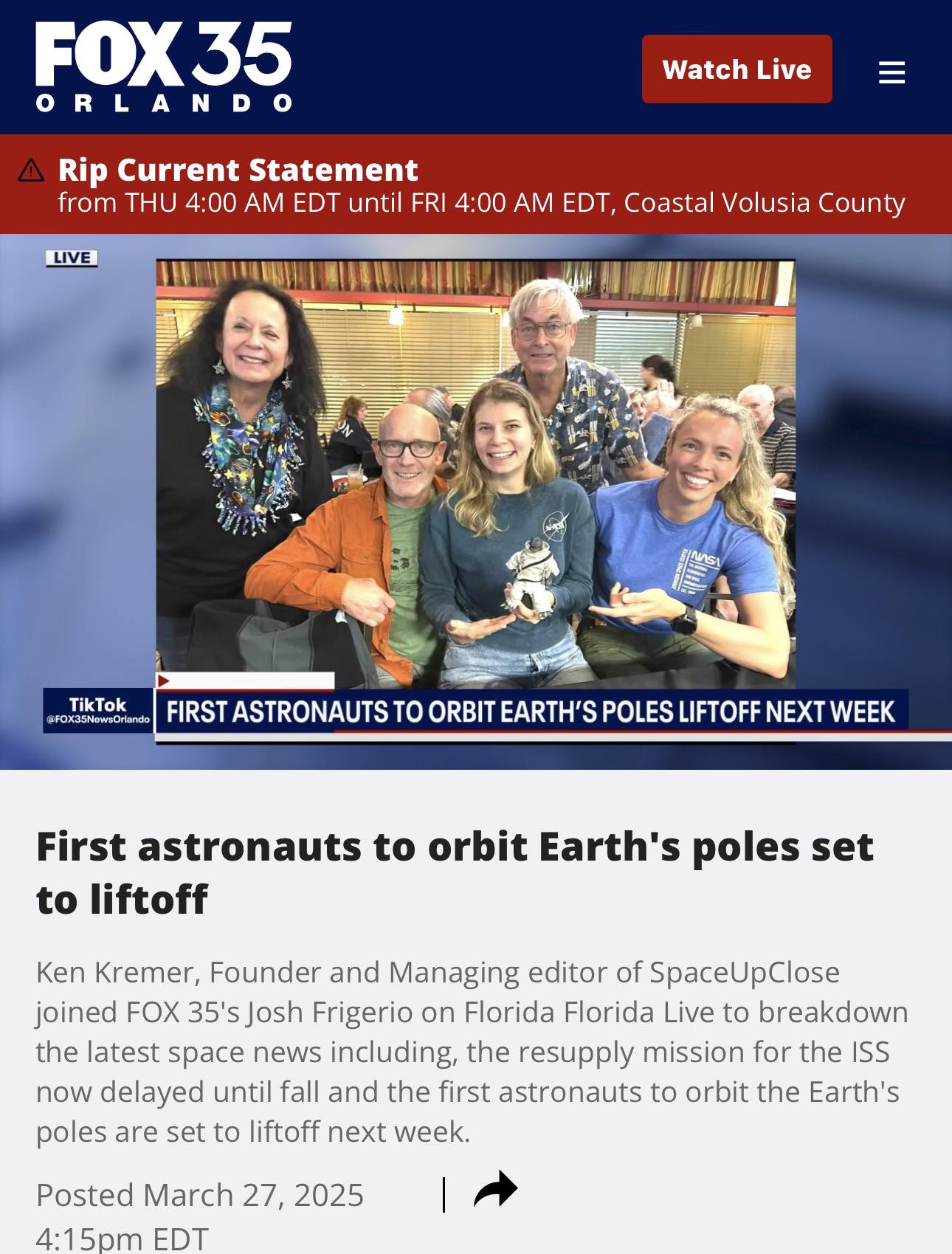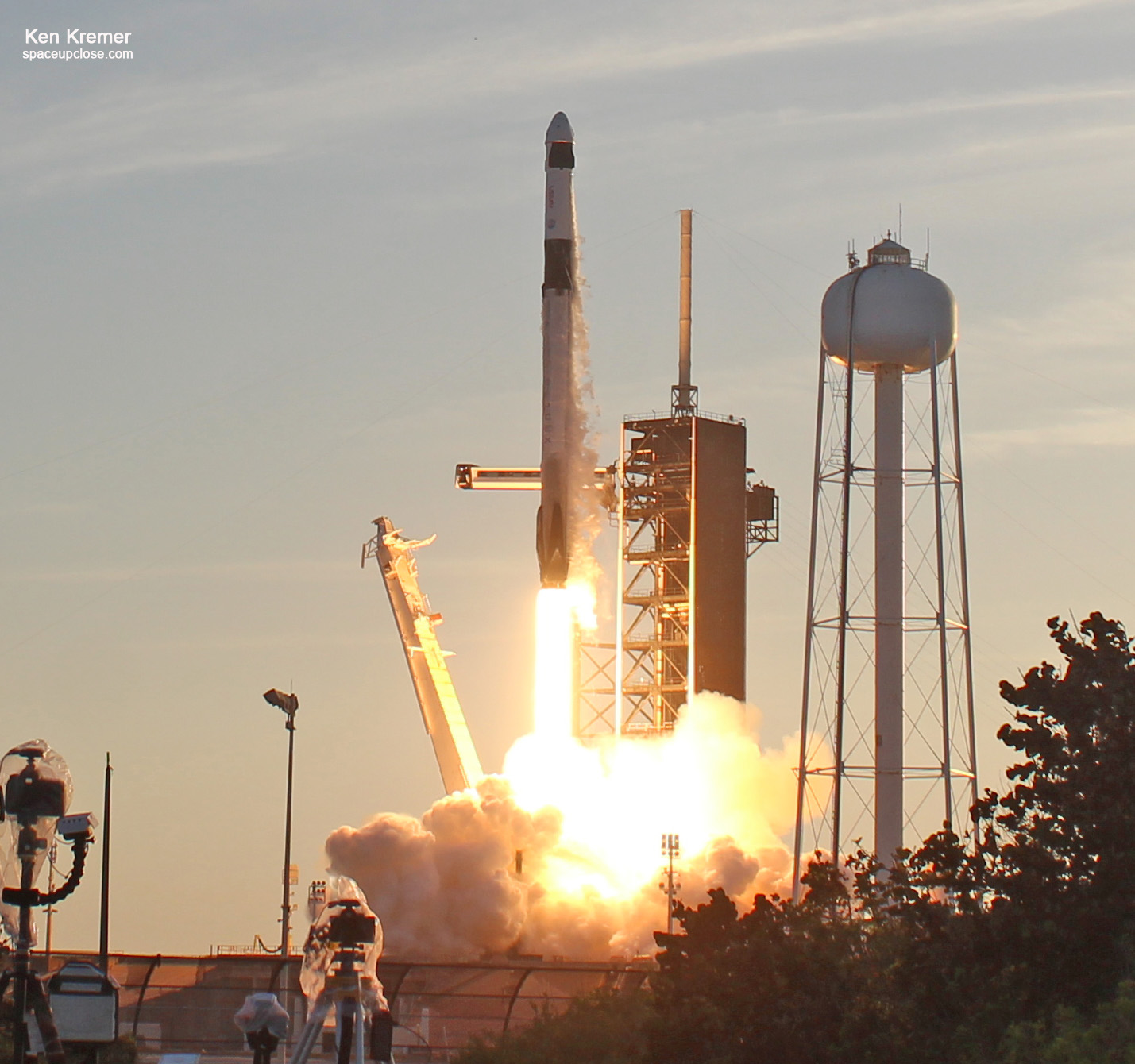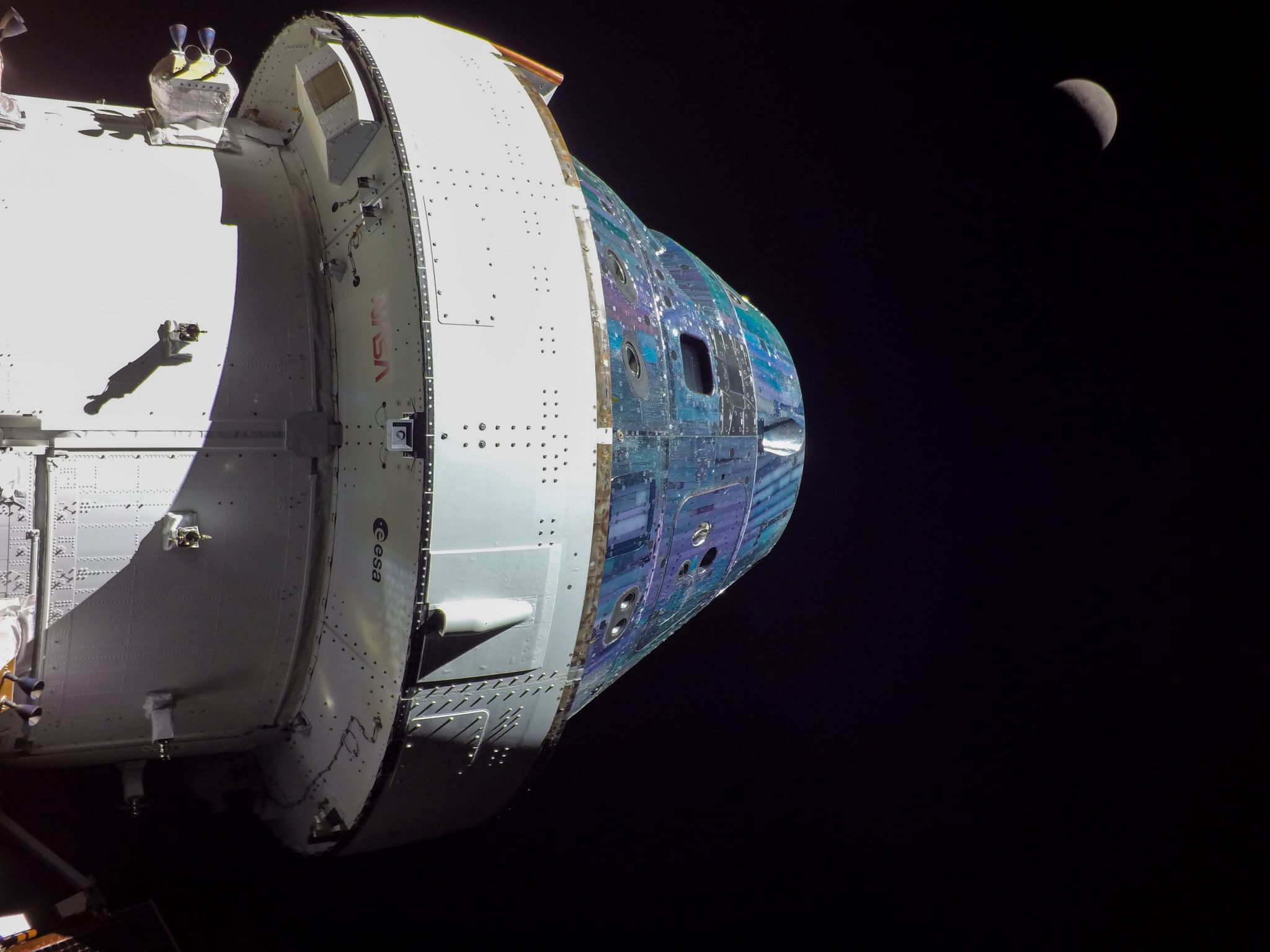
For SpaceUpClose.com & RocketSTEM
KENNEDY SPACE CENTER, FL –NASA’s Orion crew capsule entered its a distant retrograde orbit (DRO) trajectory around the Moon after completing a critical thruster firing on Friday afternoon, Nov. 25, of the main engine required for lunar orbit insertion on Flight Day 10 of the 25.5-day long Artemis 1 unpiloted test flight mission.
Orion’s Orbital Maneuvering System (OMS) engine performed an 88-second-long burn at 4:52 p.m. EST (2152 GMT) while firing to provide about 6000 pounds of thrust to slingshot Orion around the Moon and insert the spacecraft into the distant retrograde orbit while traveling over 2250 mph – that will take it farther from Earth than any of the Apollo lunar capsules and farther than any human rated capsule ever.
“Everything went well!” with the DRO burn by the OMS engine reported Controllers situated in the White Flight Control Room at NASA’s Johnson Space Center in Houston, who commanded the burn.
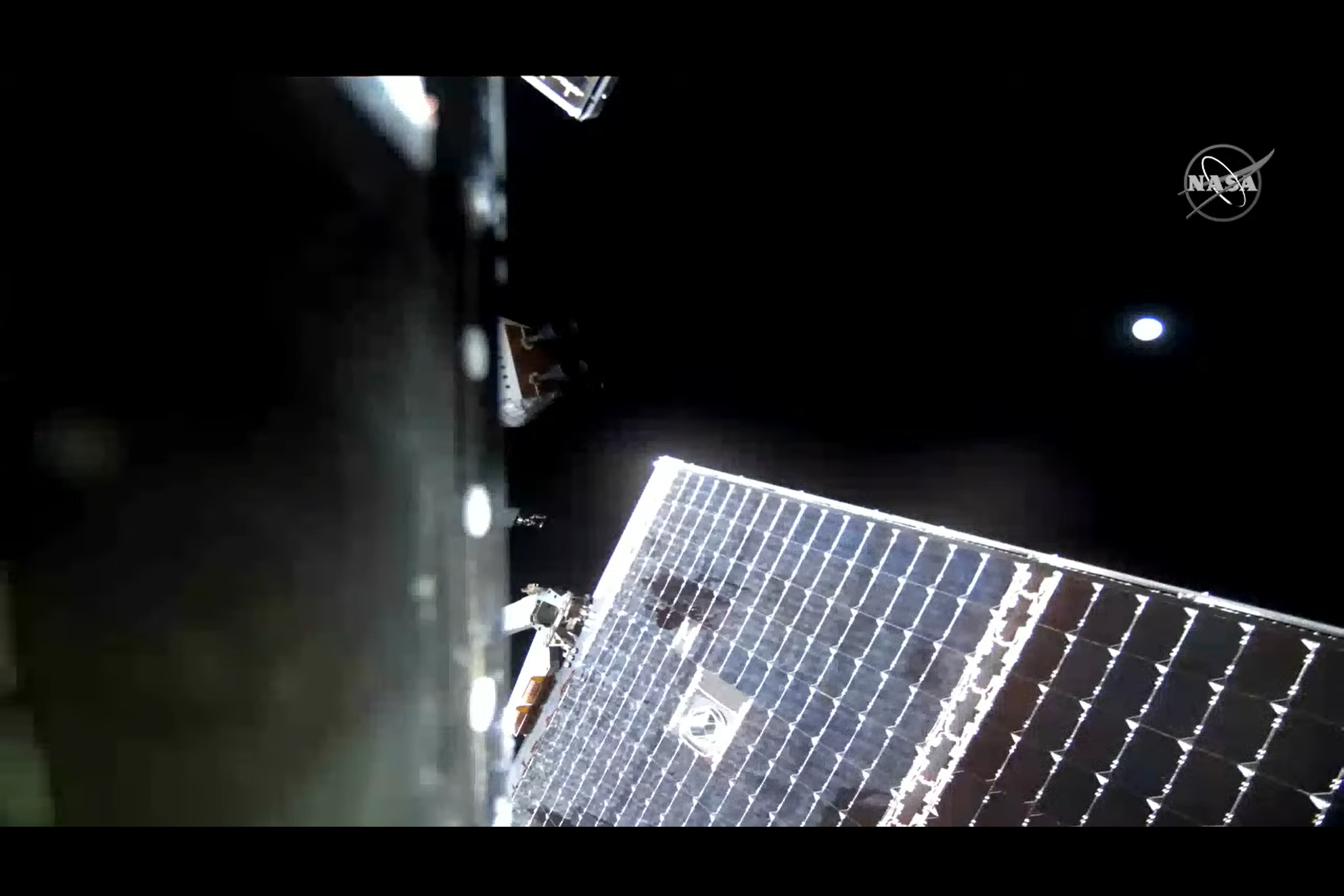
Orion was approximately 237, 680 miles from Earth and 57,000 miles from the Moon at the time of the DRO burn.
.@NASA_Orion is in distant retrograde orbit! @NASA_Johnson performed a DRO insertion burn, firing the orbital maneuvering system engine. Shortly before, Orion was more than 57K miles above the lunar surface – the farthest distance it will reach from the Moon during #Artemis I. pic.twitter.com/t7x4jL0SNv
— Jim Free (@JimFree) November 25, 2022
The OMS engine utilized for the DRO burn propelled Orion at 363 feet per second Or and is attached to the base of the Service Module built by the European Space Agency (ESA) in a collaborative effort with NASA’s Project Artemis, who’s goal is to return astronauts to the surface of the Moon later this decade.
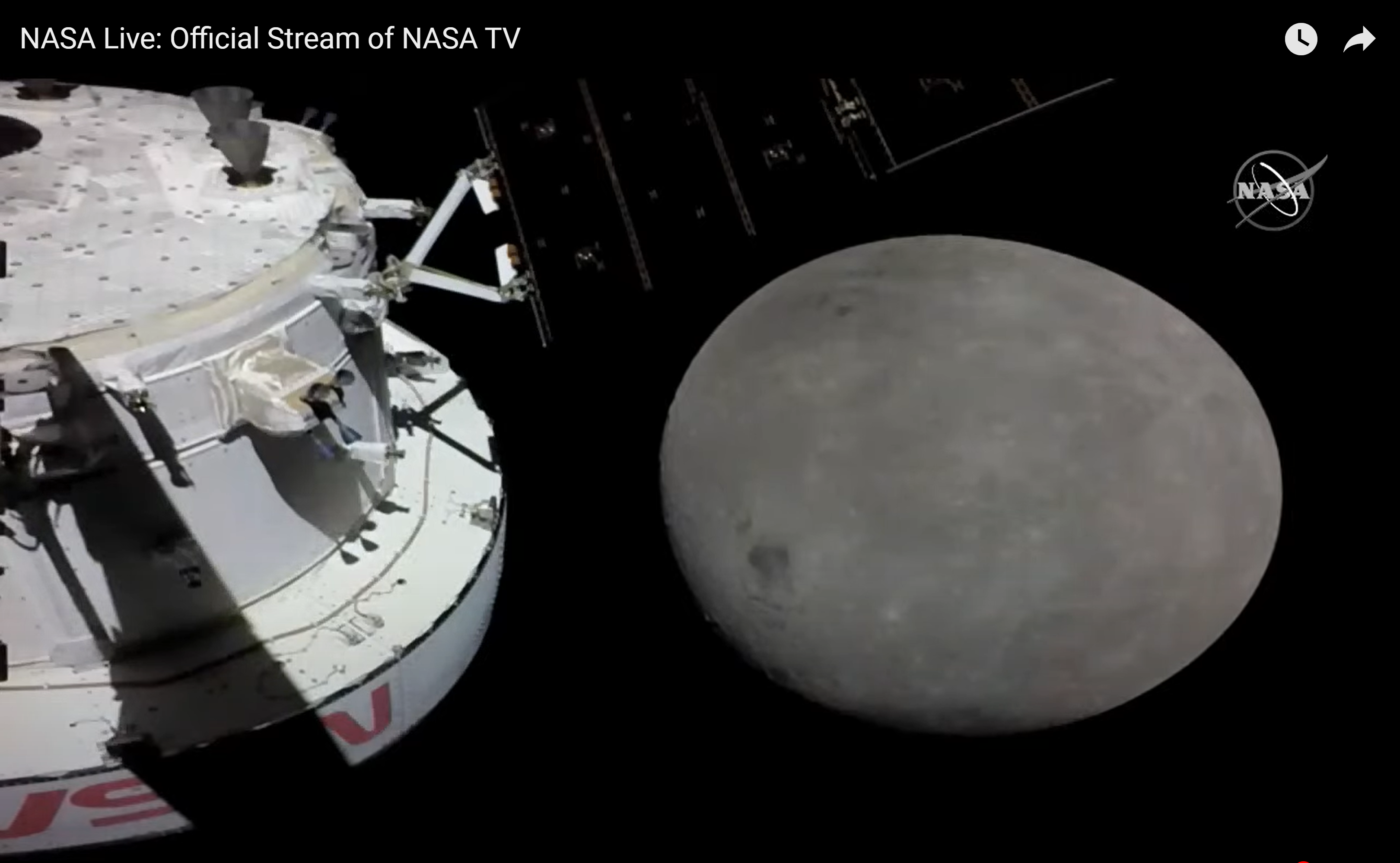
Orion will remain in DRO orbital trajectory for a half loop around the Moon over the next six days in order to test and monitor key systems and perform numerous checkouts in a deep space environment about traveling some 40,000 miles above the lunar surface before beginning the journey back to Earth, says NASA.
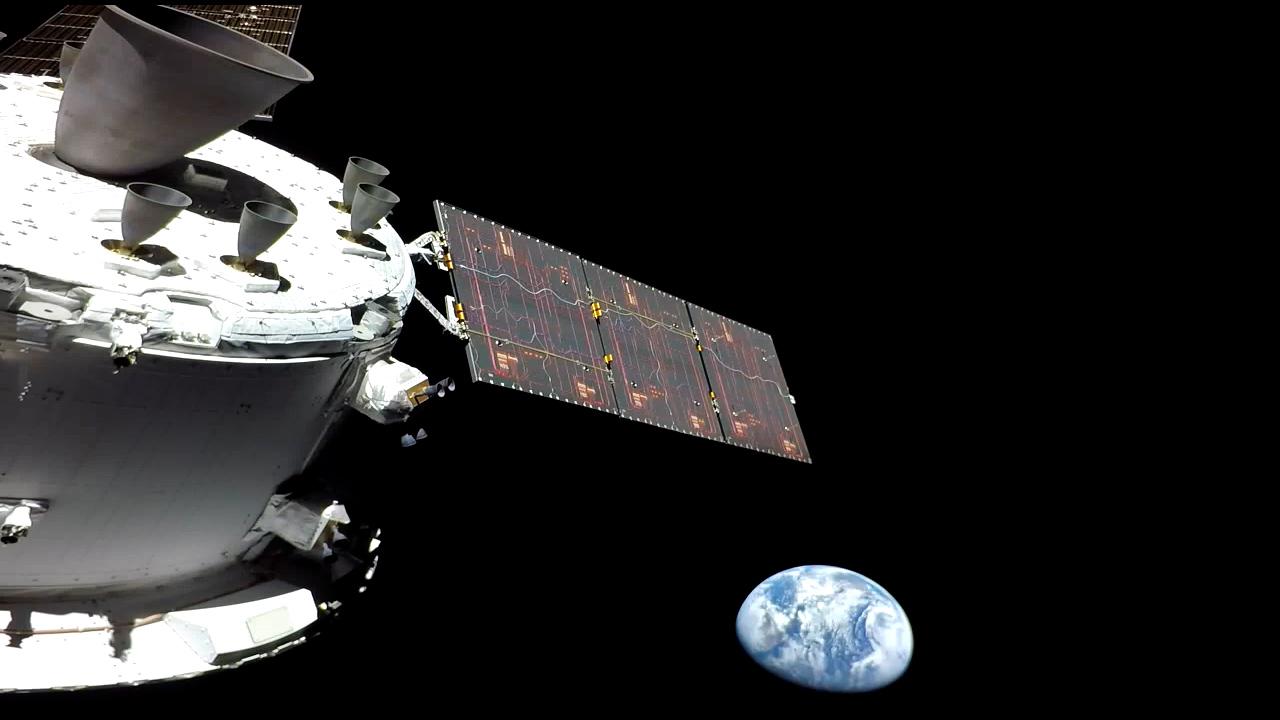
The OMS engines are recycled from the space shuttle and repurposed for Orion. This OMS engine flew on 19 shuttle missions between 1984 and 2002.
The DRO insertion burn took place four days after Orion successfully completed its outbound powered flyby (OPF) engine burn Monday, Nov. 21 and made its closest flyby of the Moon at an altitude of about 81 miles – thereby keeping the human space vehicle and Artemis 1 mission precisely on track for targeting the distant retrograde orbit (DRO) trajectory.
OPF took place just five days after the spectacular thunderous blastoff from the Kennedy Space Center (KSC) in Florida.
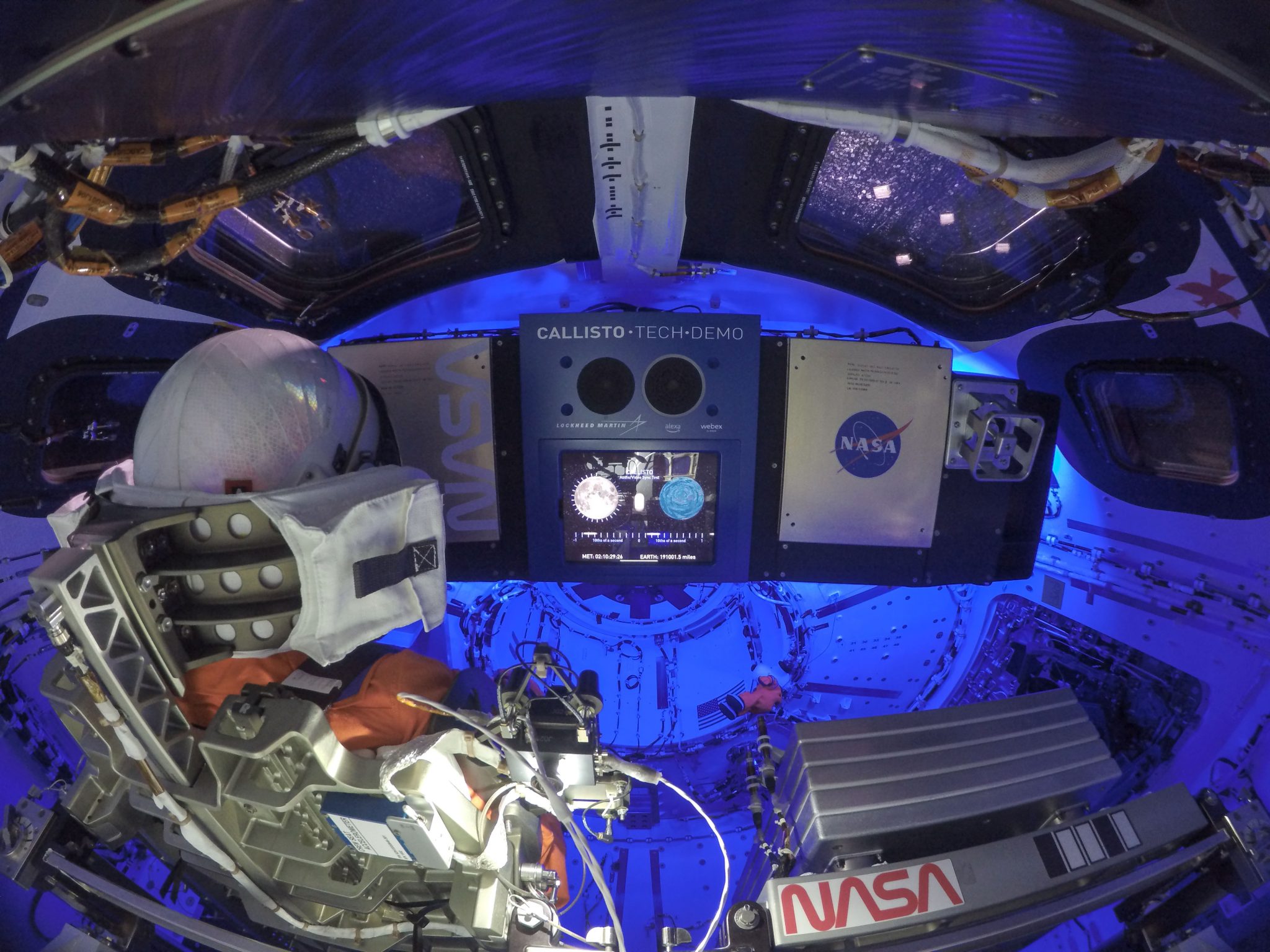
Orion successfully performed the outbound powered flyby burn at 7:44 a.m. EST, Monday, Nov. 21, while traveling on the far side of the Moon with a firing of the orbital maneuvering system engine (OMS) engine attached to the base of the ESA Orion service module for 2 minutes and 30 seconds while travelling at 5,023 mph.
Orion is exceeding expectations from NASA, the industry teams and our European partners at ESA that built the SLS, Orion crew module, service module, grind hardware and all associated systems.
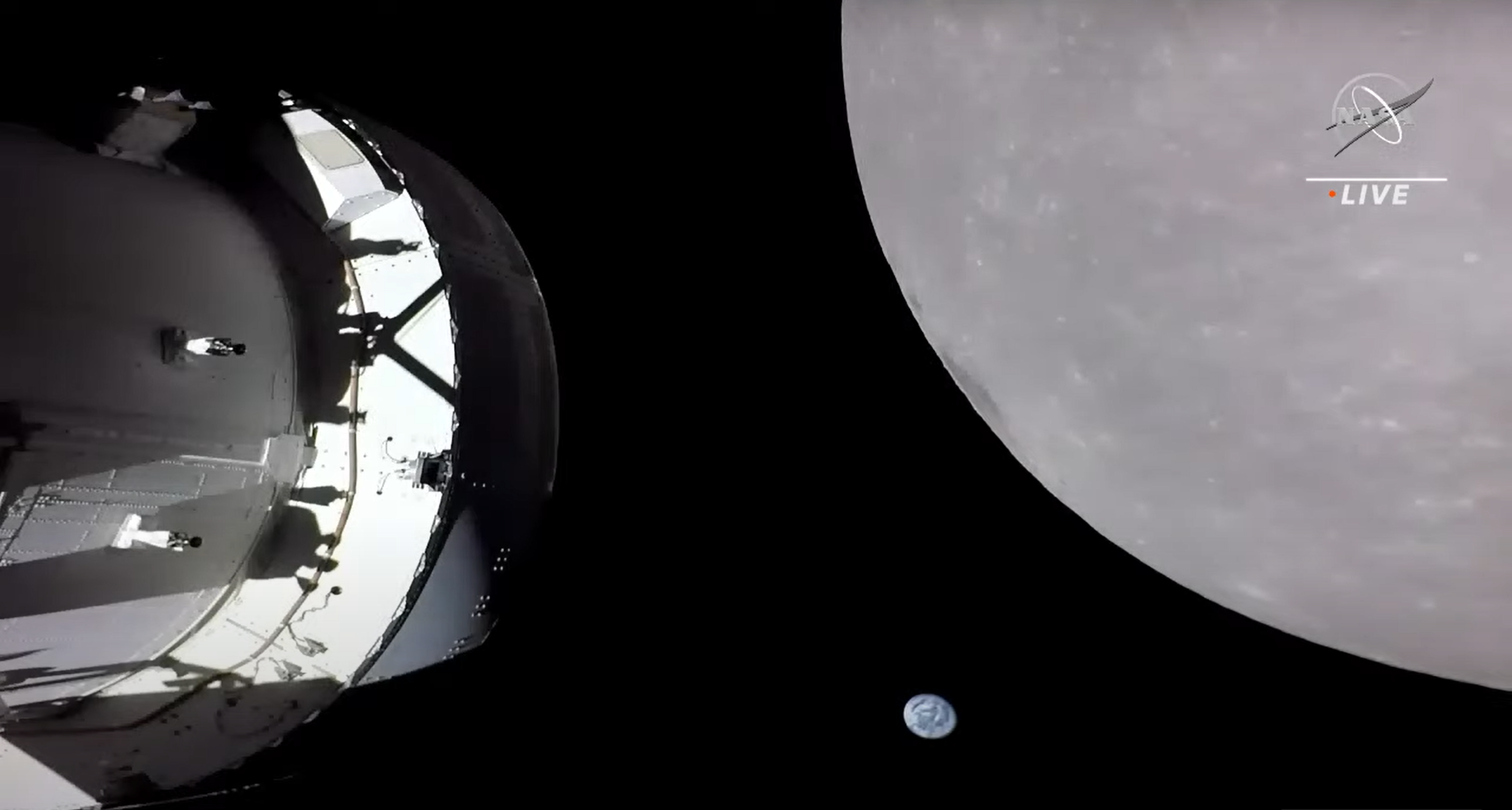
NASA is using the DRO orbit for Artemis 1 because it is a very fuel efficient trajectory around the moon requiring minimal thruster firings.
The DRO orbital trajectory purpose is to test Orion to its limits for nearly a month and will not be used on any future Artemis missions
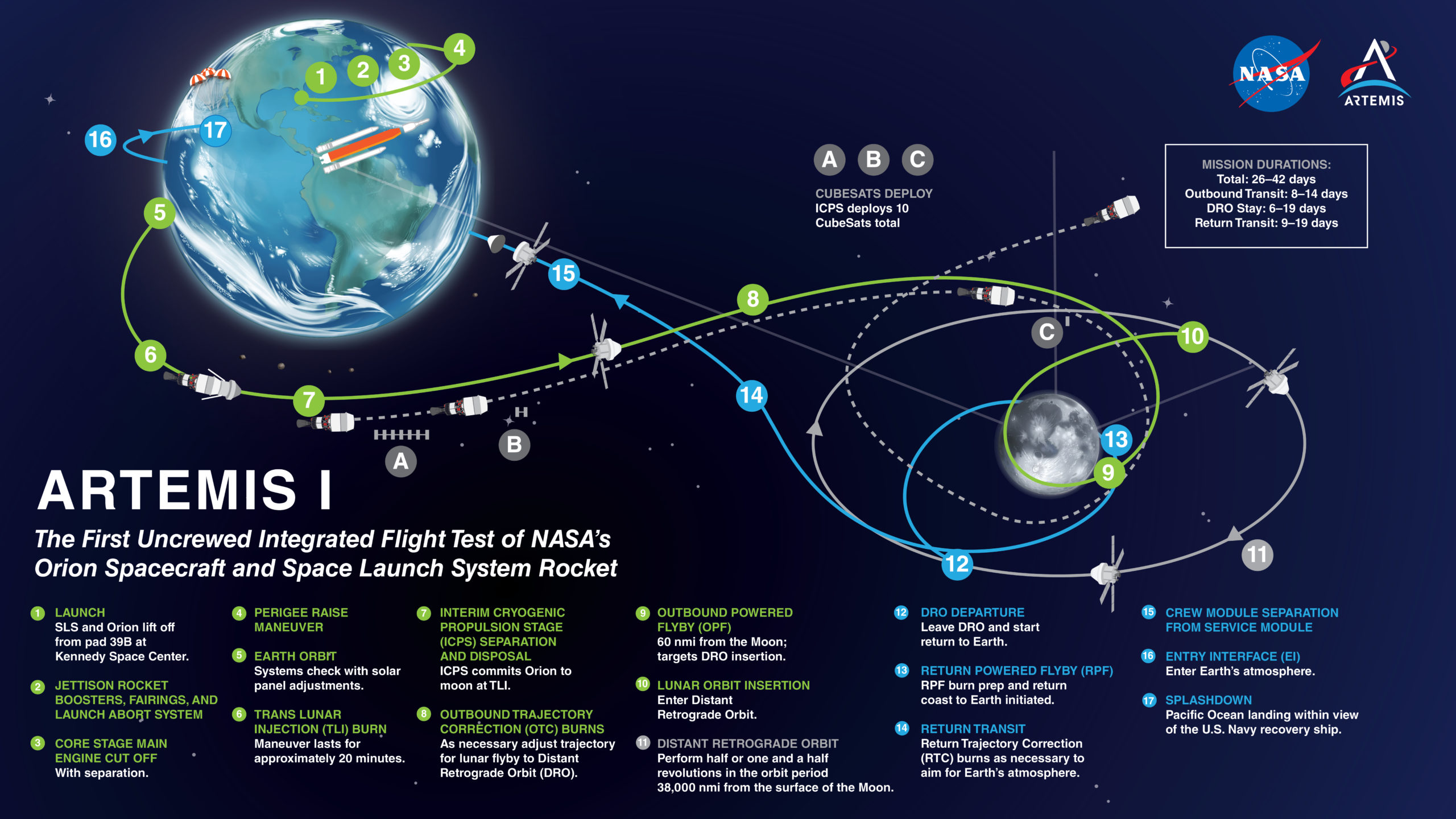
DRO is “distant” in “the sense that it’s at a high altitude approximately 50,000 miles from the surface of the Moon. Due to the distance, the orbit is so large that it will take the spacecraft six days to complete half of a revolution around the Moon before exiting the orbit for the return journey back to Earth.”
Future Artemis moon landing missions and NASA’s planned Gateway lunar orbiting mini space station will use the NRHO orbit – or near rectilinear halo orbit to provide access to the lunar south pole and caches of lunar water ice inside permanently shadowed craters.
Orion was traveling more than 57,000 miles (92,000 km) above the lunar surface around the time of the DRO burn, marking the farthest distance it will reach from the Moon during the Artemis 1 mission.
In fact while in DRO Orion will surpass the distance record for a mission with a spacecraft designed to carry humans to deep space and back to Earth, at 7:42 a.m. EST Saturday, Nov. 26.
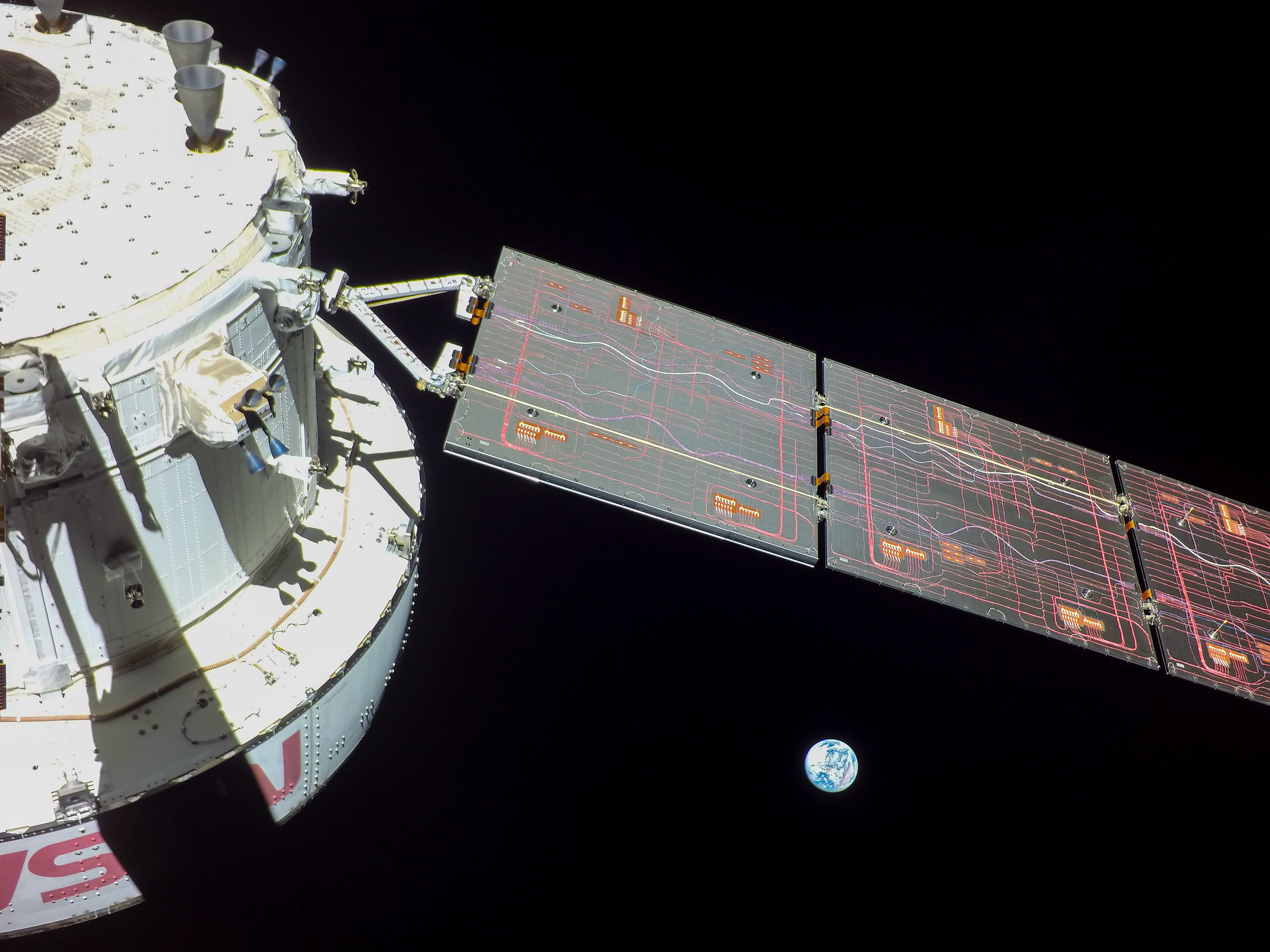
“The record was set during the Apollo 13 mission at 248,655 miles from our home planet,” says NASA.
At its maximum distance from the Moon, Orion will be more than 270,000 miles from Earth Monday, Nov. 28.
About four days later, the spacecraft will harness the Moon’s gravitational force once again, combined with a precisely timed lunar flyby burn to slingshot Orion onto its return course to Earth ahead of splashdown in the Pacific Ocean on Sunday, Dec. 11.
“On Artemis I, engineers are testing several aspects of the Orion spacecraft needed for deep space missions with crew, including its highly capable propulsion system to maintain its course with precision and ensure its crew can get home, communication and navigation systems to maintain contact with the ground and orient the spacecraft, systems and features to handle radiation events, as well as a heat shield that can handle a high-speed reentry from the Moon. Both distance and duration demand that spacecraft must have systems that can reliably operate far from home, be capable of keeping astronauts alive in case of emergencies and still be light enough that a rocket can launch it,” says NASA.
While @NASA_Orion is in distant retrograde orbit, flight controllers at @NASA_Johnson will monitor key systems and perform checkouts in the environment of deep space. We're testing critical systems on Orion during #Artemis I to prepare for carrying @NASA_Astronauts on Artemis II. pic.twitter.com/r0CWi6Ozks
— Jim Free (@JimFree) November 25, 2022
The Artemis 1 mission and Orion capsule have been performing admirably with only a few minor issues since its launch on Nov. 16
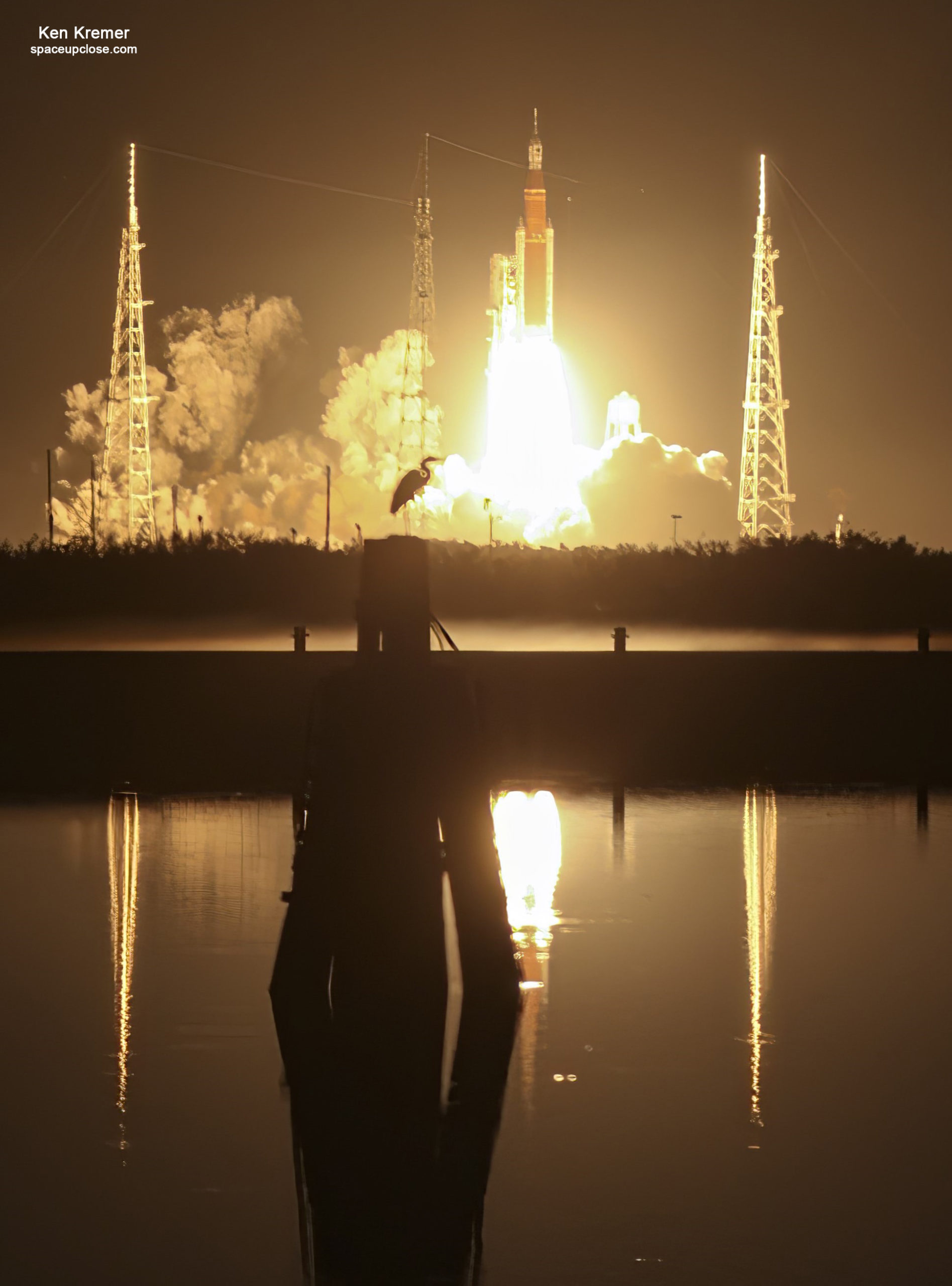
“In terms of overall systems failures, we haven’t seen a single thing on the rocket or on the spacecraft that would have caused us to question our reliability or our redundancy,” said Mike Sarafin, NASA Artemis 1 mission manager, said at the media mission briefing on Nov. 21.
Artemis II will test the systems required for astronauts to live and breathe in deep space. Long duration missions far from Earth drive engineers to design compact systems not only to maximize available space for crew comfort, but also to accommodate the volume needed to carry consumables like enough food and water for the entirety of a mission lasting days or weeks.
SLS lifted off with an uncrewed Orion capsule for its stunning flight test debut on the Artemis 1 mission at 1:47 a.m. EST (0647 GMT) Wednesday, Nov. 16 from Launch Pad 39B at the Kennedy Space Center in Florida – sending America to the moon with the 1st human rated capsule in 50 years.
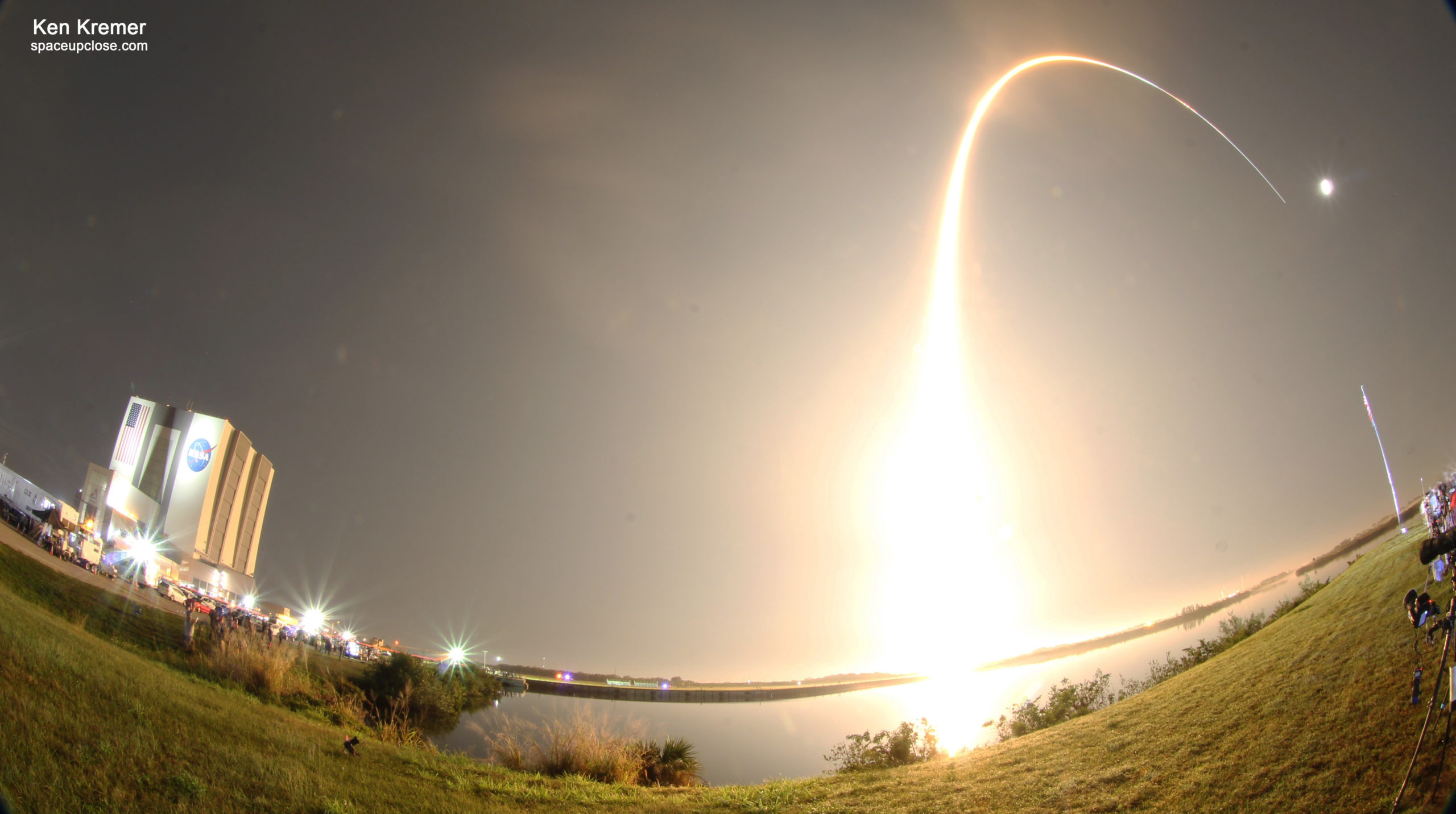
SLS now counts as the world’s the most powerful rocket ever built – about 15 to 20% more powerful than NASA’s Apollo Saturn V moon rocket and the Space Shuttle.
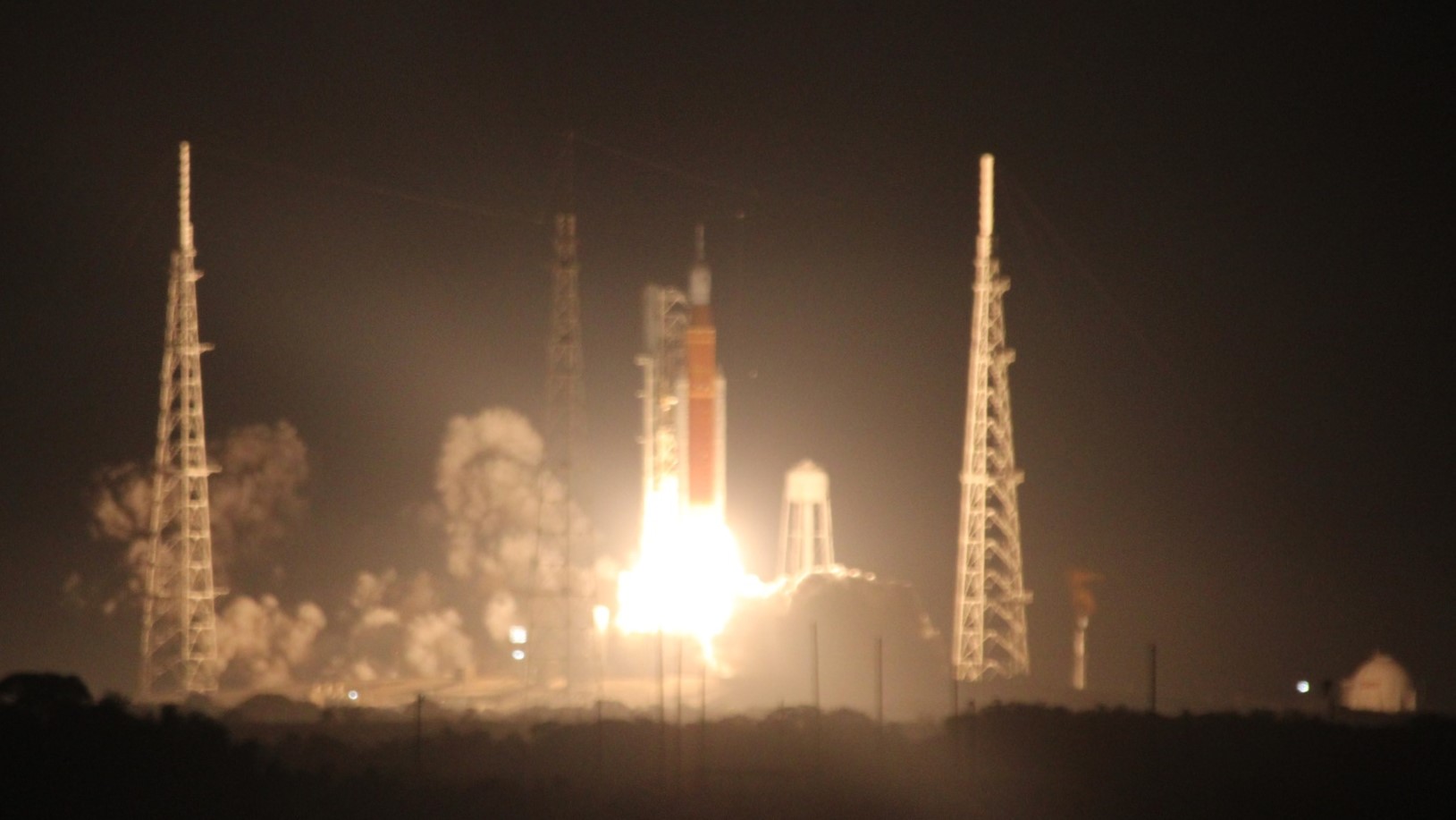
The primary objectives for the Artemis 1 mission that must be accomplished following the successful launch and delivery by the SLS moon rocket are: demonstrating Orion’s heat shield at lunar return re-entry conditions, demonstrating operations and facilities during all mission phases, and retrieving the spacecraft after splashdown.
Artemis 1 is the first integrated flight test of the agency’s deep space exploration systems: the Orion spacecraft, Space Launch System (SLS) rocket, and ground systems and the mission is a critical part of NASA’s Moon to Mars exploration strategy.
The 32-story tall Artemis 1 stack is comprised of NASA’s Space Launch System (SLS) Mega moon rocket integrated with the Orion crew spacecraft on top.
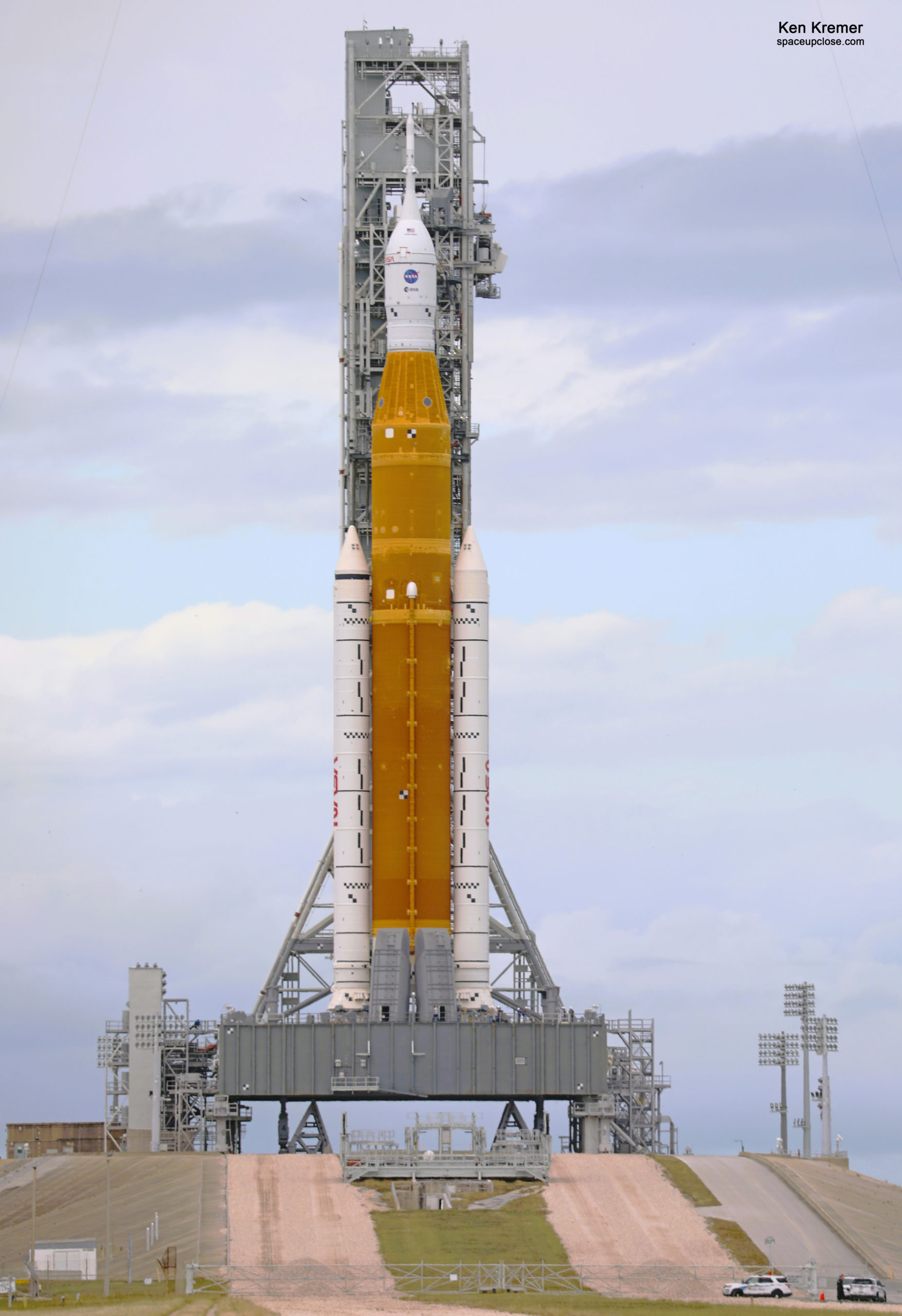
Watch Ken’s commentary about Project Artemis, SpaceX Falcon Heavy, Crew-5, NASA SLS cryo and WDR tests, NASA SpaceX Crew & Cargo Dragons and more
Nov 22: WFTV ABC News Orlando interview about upcoming NASA SpaceX CRS 26 cargo resupply mission to the ISS and science aboard + Artemis 1 launch and Orion crew capsule successfully entering lunar orbit, results and mission goals
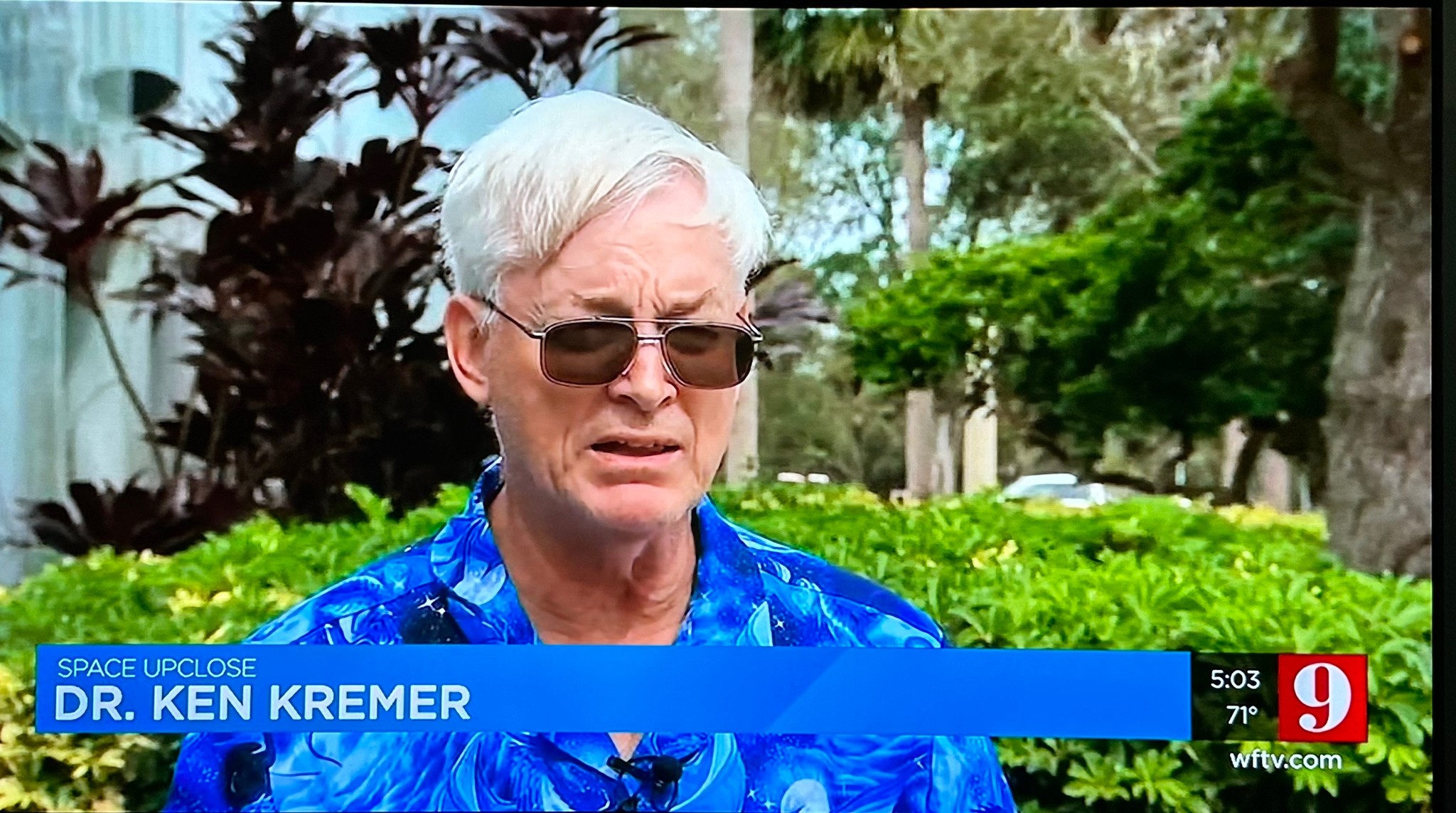
Nov 22: Fox 35 interview about upcoming NASA SpaceX CRS 26 cargo resupply mission to the ISS and science aboard + Artemis 1 launch and Orion crew capsule successfully entering lunar orbit, results and mission goals
Nov 21: BBC World TV interview about Orion crew capsule successfully entering lunar orbit, results and mission goals
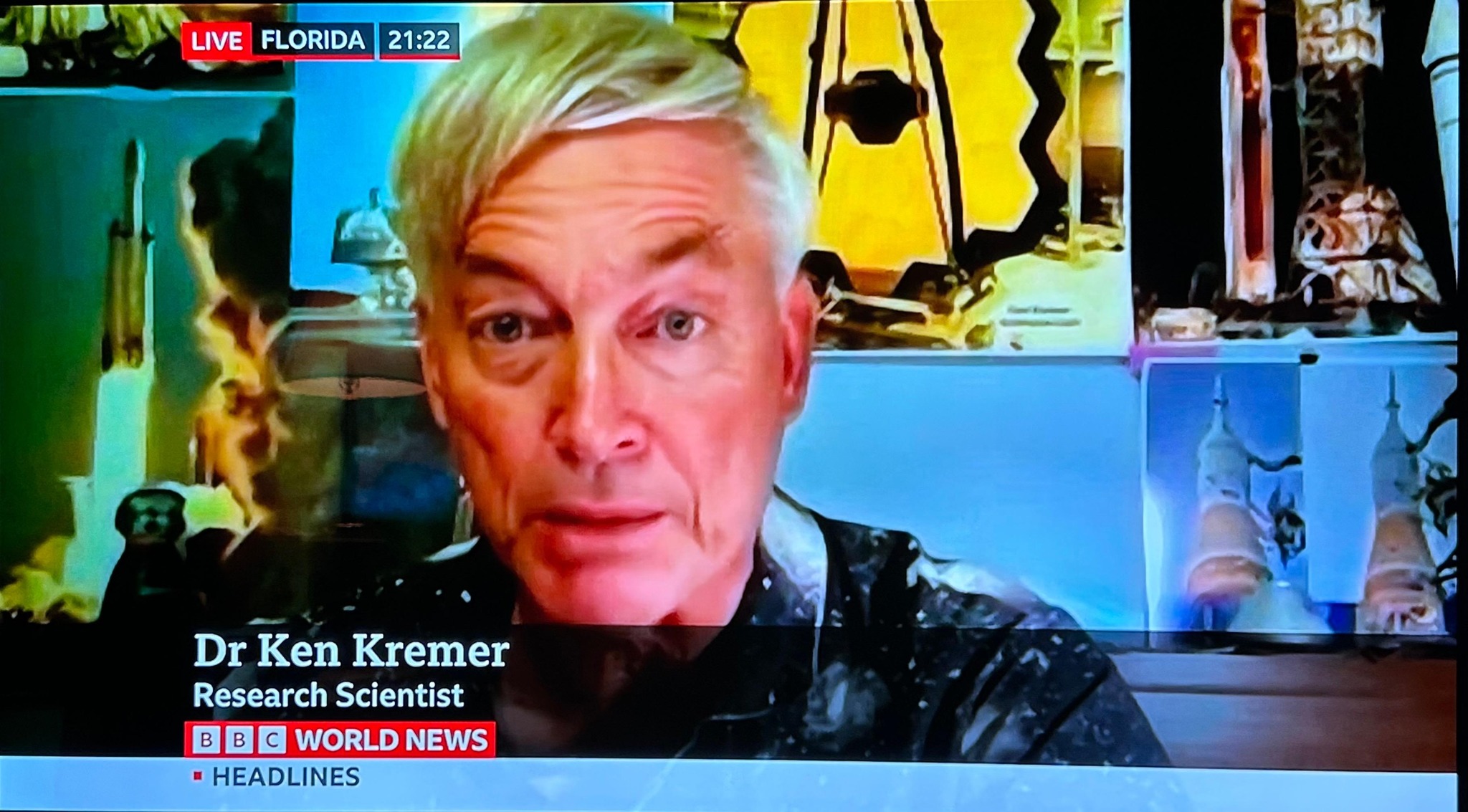
Nov 16: Fox 35 Orlando live and taped interviews about Artemis 1 launch and goals
Nov 15/16: News Nation interview about Artemis 1 launch and goals
Nov 7/8: Fox 35 Orlando – As subtropical storm Nicole approaches KSC and Florida watch my comments about NASA deciding for the moment to keep Artemis 1 moon rocket at pad 39b and not roll back to VAB
https://www.fox35orlando.com/news/nasa-says-its-keeping-artemis-outside-during-major-storm
NASA says it's keeping Artemis on the launch pad. The rocket can withstand winds up to 85 miles an hour. The @NWSMelbourne is predicting windspeeds could very well hit that point in Brevard County – in fact, a Tuesday morning update says windspeeds could be in the 74-110mph range pic.twitter.com/i569eAmi9p
— Marie Edinger FOX 35 (@MarieEdinger) November 8, 2022
Nov 4/5: WFTV ABC News Orlando featured my commentary about Artemis 1 rollout overnight and goals of NASA lunar test flight mission launching Nov 14 at 1207 AM
Nov 4: Fox 35 Orlando featured my commentary about Artemis 1 rollout overnight and goals of NASA lunar test flight mission launching Nov 14
Nov 1: Fox 35 Good Day Orlando morning show featured my live and taped prelaunch interview commentary about SpaceX Falcon Heavy launch with Space Force national security payloads
Nov 1: WFTV ABC News featured my commentary about SpaceX Falcon Heavy launch with Space Force national security payloads
https://news.yahoo.com/watch-lve-spacex-launches-falcon-100341265.html
Oct 31: WFTV ABC News featured my commentary about SpaceX Falcon Heavy launch with Space Force national security payloads
Oct 27: WFTV ABC News and Fox 35 Orlando featured my commentary about Falcon Heavy and the Space Force national security payloads
https://www.fox35orlando.com/video/1137117
Watch Ken’s continuing reports about Artemis, SpaceX missions, SLS, Orion and NASA missions, SpaceX Crew and Cargo Dragons, SpaceX Axiom, JWST, DART, Lucy Asteroid mission, GOES, SpaceX Starlink, Commercial Crew and Starliner and Crew Dragon, Blue Origin and Space Tourism, and onsite for live reporting of upcoming and recent SpaceX and ULA launches including Crew 1 & 2 & 3 & 4 & 5, ISS, Solar Orbiter, Mars 2020 Perseverance and Curiosity rovers, NRO spysats and national security missions and more at the Kennedy Space Center and Cape Canaveral Space Force Station.
Stay tuned here for Ken’s continuing Earth and Planetary science and human spaceflight news: www.kenkremer.com –www.spaceupclose.com – twitter @ken_kremer – email: ken at kenkremer.com
Dr. Kremer is a research scientist and journalist based in the KSC area, active in outreach and interviewed regularly on TV and radio about space topics.
………….
Ken’s photos are for sale and he is available for lectures and outreach events
Please consider supporting Ken’s work by purchasing his photos and/or donating at Patreon
https://www.patreon.com/kenkremer
Upcoming and recent space events and talks by Ken Kremer & Jean Wright
Nov 29 at UCF, Orlando Florida: Presentation by Jean Wright.
Nov 14/15/19/20/25/29 from 7 to 9 PM Quality Inn, Titusville, FL: Join Ken and Jean for Artemis 1, Falcon Heavy and space mission and rocket launch outreach. Ask us anything. plus display our photos and space apparel items for sale
x


